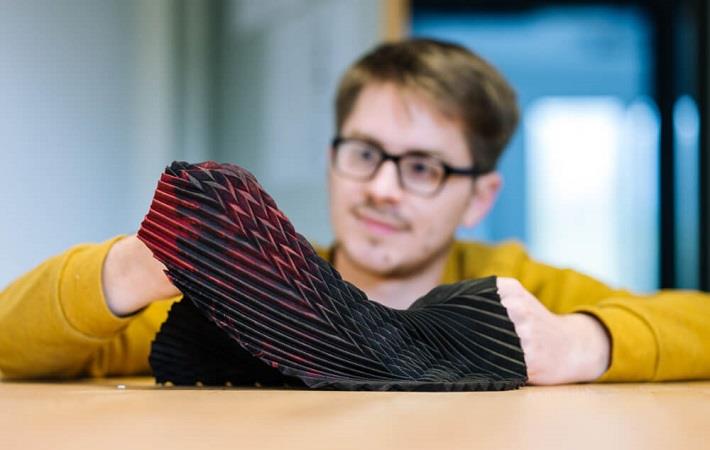NewsWrap '20 – Select 10: Technical Textiles

Scientists at Saarland University in the German state of Saarland have developed a new method to make electro-sensitive fabrics, called e-textiles, in a simple way. The method, announced in October, makes it possible to convert textiles and garments into e-textiles, without affecting their original properties. The textiles remain thin, stretchable and supple. The electrical properties are “dyed” into the fabric. The new method makes it possible to convert textiles and garments into e-textiles, without affecting their original properties – they remain thin, stretchable and supple. This creates new options for quick and versatile experimentation with new forms of e-textiles and their integration into IT devices.
MIT scientists open news way for smart textiles
Scientists from the Massachusetts Institute of technology in December reported a way to pattern hundreds-of-metres-long multimaterial fibres with embedded functional elements. Multimaterial fibres that integrate metal, glass and semiconductors will be useful in biomedicine, smart textiles and robotics. But, positioning functional elements has been difficult. With this method, functional elements, such as electrodes or sensors, could be positioned at specific locations. The researchers developed a thiol-epoxy/thiol-ene polymer that could be combined with other materials, heated and drawn from a macroscale model into fibres that were coated with the polymer.
Southampton University leads project on smart textiles
Bath scientists make nylon fibres to produce electricity
Harvard team develops ultra-sensitive, resilient sensor
Sabic, Fibertex to use recycled plastics for nonwovens
University of Manchester assesses textile composites
University of Borås develops new textile material
Skoltech scientists open way for use of C nanoparticles
Borås doctorate student creates luminescent textiles
A researcher at the University of Borås in October reported creating luminescent textiles using luminescence phenomena in nature, while pursuing her doctorate. Her work in textile technology can be useful in several areas since luminescent materials have a wide range of applications including in biomedicine, biosensors, safety, architecture and aesthetics. The researcher has made the first successful attempt to create luminescent textiles with the help of luminescence phenomena in nature. The doctoral thesis is based on there being living organisms in nature with properties that humans can benefit from in many ways. One example is how luminescence phenomena in nature, that is, bodies emitting invisible cold light, can be used to create luminescent textiles.
To read more subscribe to January 2021 edition of Fibre2Fashion.
For queries & brickbats, write to: richabansal@fibre2fashion.com
Fibre2Fashion News Desk (RKS)
































-Ltd..jpg?tr=w-120,h-60,c-at_max,cm-pad_resize,bg-ffffff)





.jpg?tr=w-120,h-60,c-at_max,cm-pad_resize,bg-ffffff)
.jpg?tr=w-120,h-60,c-at_max,cm-pad_resize,bg-ffffff)






